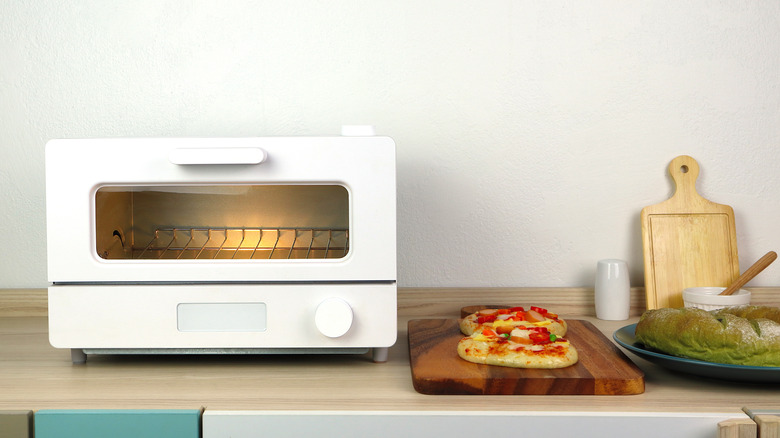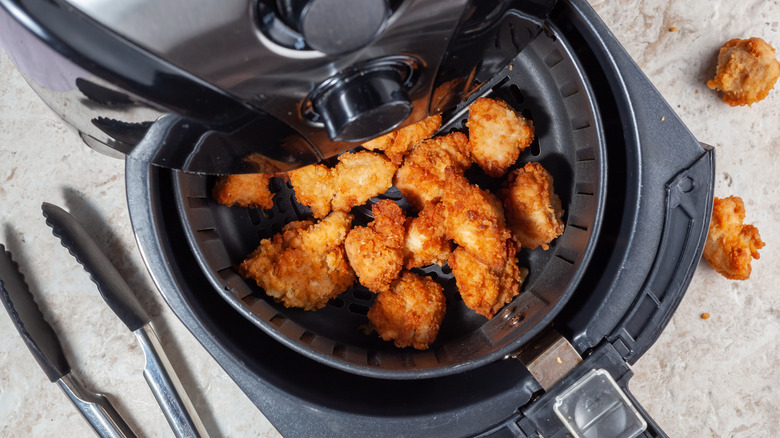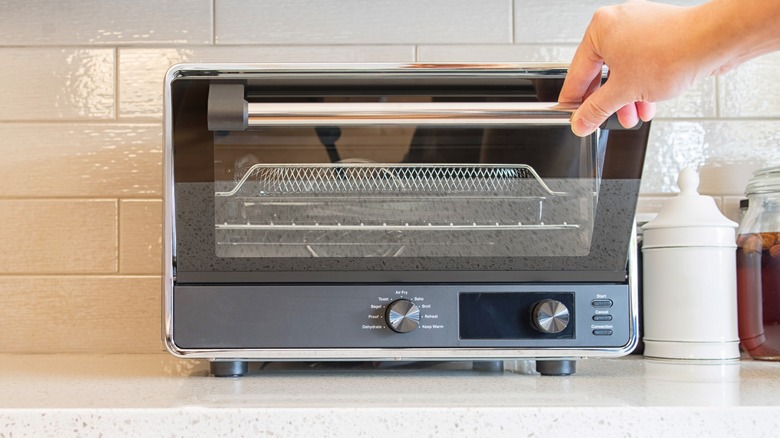Air Fryer Vs. Convection Oven: What's The Difference?
The latest craze in meal planning, food preparation, and TikTok recipes is the famous air fryer. With complete versatility, air fryers can bake a flakey piece of salmon, or a sizzling steak, and heat up your favorite frozen fries. It appears as though the air fryer has taken a front seat in just about every heating and warming food preparation. In local supermarkets like Trader Joe's, air frying instructions can be seen as the preferred heating option for some of their best sellers.
Small, adaptable, and resourceful, can the air fryer replace other kitchen appliances and gadgets in your home? While the popularity of air fryers has soared, it raised questions about the need for an air fryer and a convection oven. To help distinguish the differences between the classic versus hip kitchen appliance, we dived into the core and fundamental differences between an air fryer and a convection oven.
What you need to know about the air fryer
The air fryer comes in various shapes and colors; however, one fundamental feature unifies each air fryer's model and design— circulation. While the name may paint a different story, the air fryer doesn't fry your food (via Taste of Home). The air fryer combats heat alongside a fan and a well-ventilated basket. As the appliance heats up, the hot air circulates through the ventilated basket evenly — giving any dish an overall, thoroughly cooked, and crispy result (via The Food Network). The fan and heat are coming from above while the basket chamber sits below. The basket is essential in air frying. The holes and even spacing allow the air to get underneath the food, giving it thorough cooking. If the basket is lined or overcrowded, the air fryer won't work as intended.
Another element that nutritionists and foodies like about their air fryers is the need for minimal oil if any at all while cooking. Unlike deep frying, air fryers give food a crunchy and crispy texture without heavy amounts of oil; a teaspoon will work just fine.
What you need to know about convection ovens
A staple appliance in many households (not to be confused with a traditional oven, which is a larger cooking appliance), a convection oven houses a fan similar to an air fryer and an exhaust system — unlike a conventional oven (via The Kitchn). Convection ovens were often referred to as toaster ovens, but they are different from a traditional toaster as they incorporate a fan while cooking (via Everyday Family Cooking).
Convection ovens house a small rack big enough for a small sheet pan and allow you to control both the temperature and the time. Like a conventional oven, convection ovens work with a hinged, frontal door where the food is placed on a pan and slid in. The convection oven's fan works to circulate food to evenly cook and crisp the food, similarly to the air fryer. However, while the air fryer's fan lives on the top of the appliance, a convection oven lives in the back.
With only slight differences, which appliance is better
Air fryers and convection ovens are excellent kitchen appliances that can upgrade any dish. Similarly, the two use circulated, hot air distributed by a fan to cook food evenly. While the air fryer has a ventilated basket and is generally smaller in size, the food tends to cook more evenly and end up crispier. In a convection oven, you can cook more food as the surface area of a sheet pan is larger). For a convection oven, the food will cook evenly through— but food won't turn out as crispy as an air fryer (via The Spruce Eats).
With only so many square feet of counter space in your home, what appliance should you invest in for your kitchen? Fortunately, the evolution of cooking and cooking appliances means multi-use machines. Companies such as Fotile have created appliances like the ChefCubii 4-in1 Steam-Combi Oven to help knock two birds with one stone by serving as a convection oven and an air fryer. Now, you don't have to choose one over the other.



